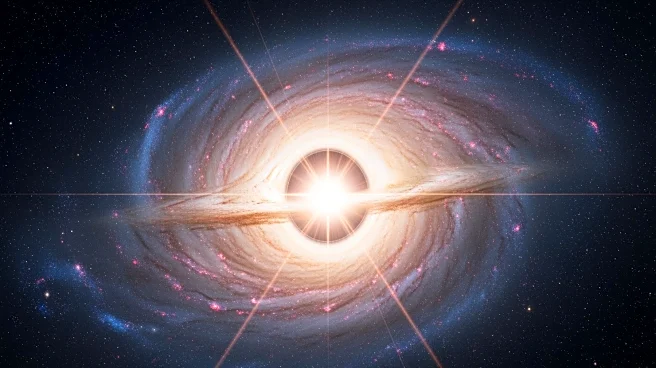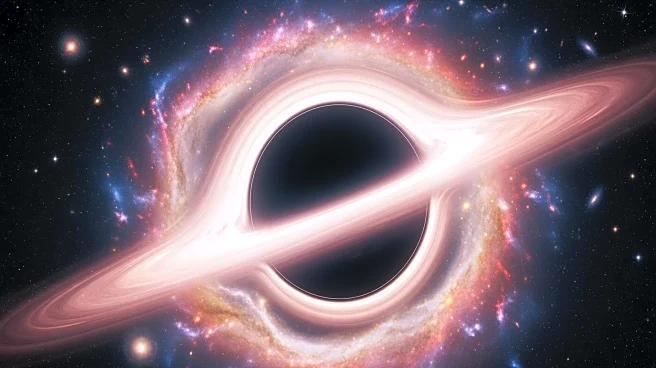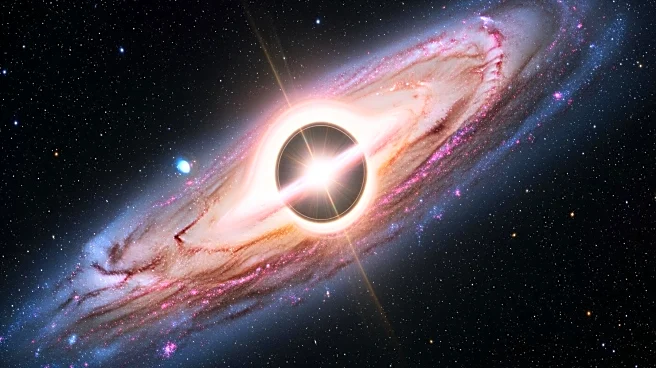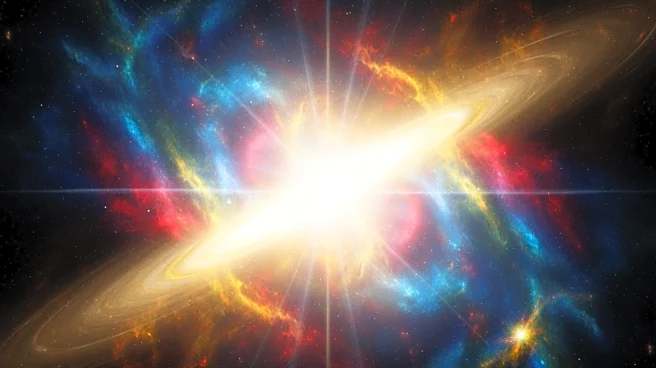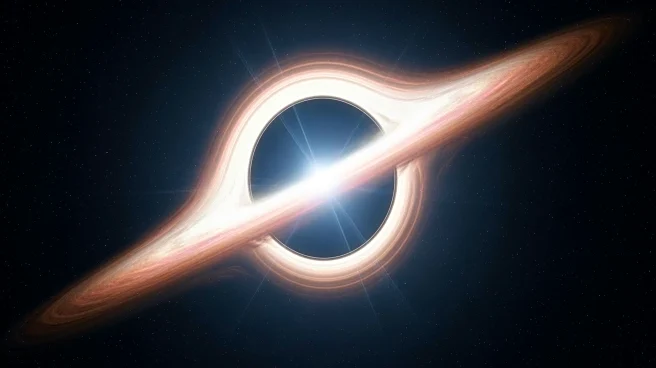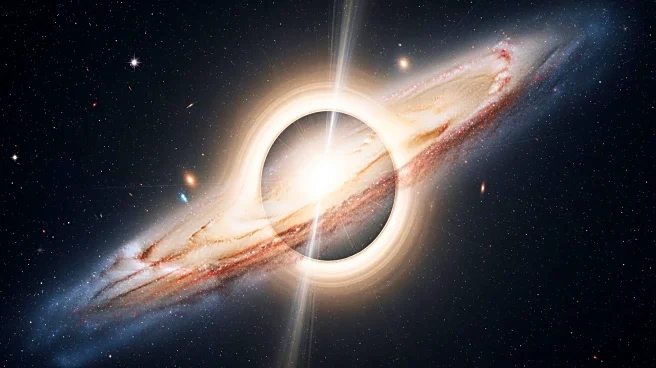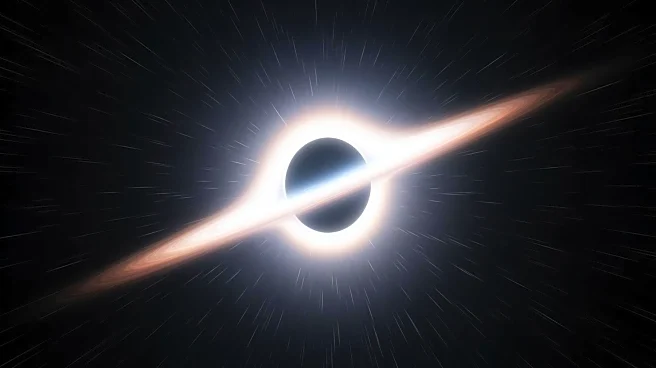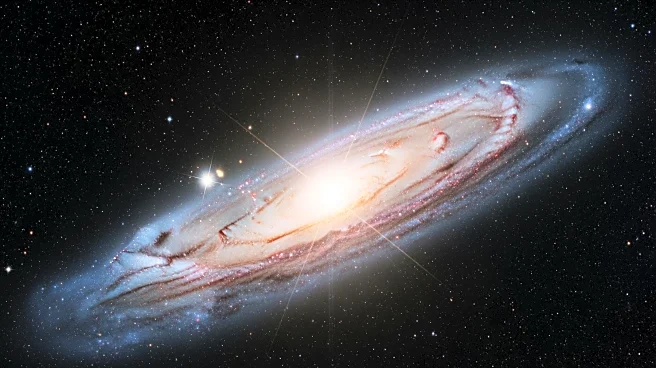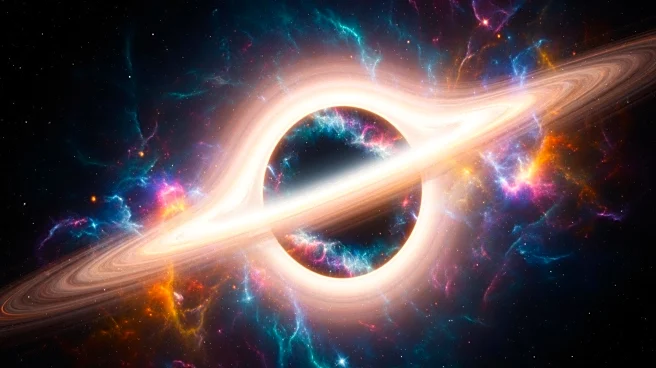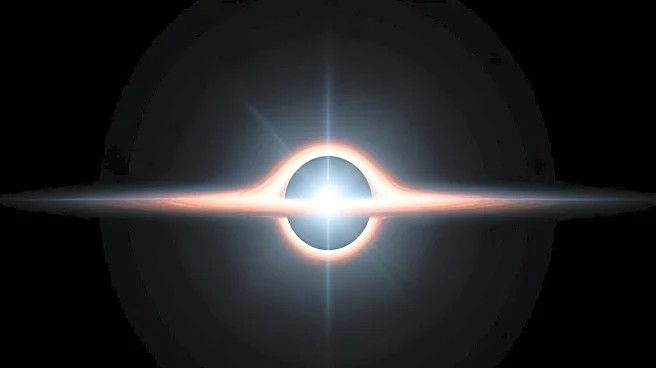What's Happening?
Astronomers have observed the most powerful flare ever recorded from a supermassive black hole, known as J2245+3743. Detected by the Zwicky Transient Facility (ZTF) and the Catalina Real-Time Transient Survey,
the flare brightened dramatically, reaching a luminosity equivalent to 10 trillion suns. This event is believed to be a tidal disruption event (TDE), where a star is torn apart by the black hole's gravity. The black hole, located 10 billion light-years away, provides a glimpse into the early universe.
Why It's Important?
This discovery offers valuable insights into the behavior of supermassive black holes and the dynamics of tidal disruption events. Understanding these phenomena can enhance knowledge of galaxy formation and evolution, as well as the role of black holes in the universe. The event's extreme brightness allows astronomers to study cosmic processes that occurred when the universe was young, contributing to the field of cosmology.
What's Next?
Astronomers plan to continue observing the flare as it fades, using long-term sky surveys to gather more data. Future observatories, such as the Vera C. Rubin Observatory, may uncover additional large TDEs, expanding the understanding of these rare cosmic events. Researchers aim to identify more examples of massive stars being consumed by black holes, which could reveal new aspects of stellar and galactic dynamics.
Beyond the Headlines
The event challenges existing models of black hole behavior and star formation within active galactic nuclei (AGN). It suggests that stars within AGN disks can grow larger, potentially leading to more frequent and intense TDEs. This could prompt a reevaluation of theories regarding star and galaxy evolution.
